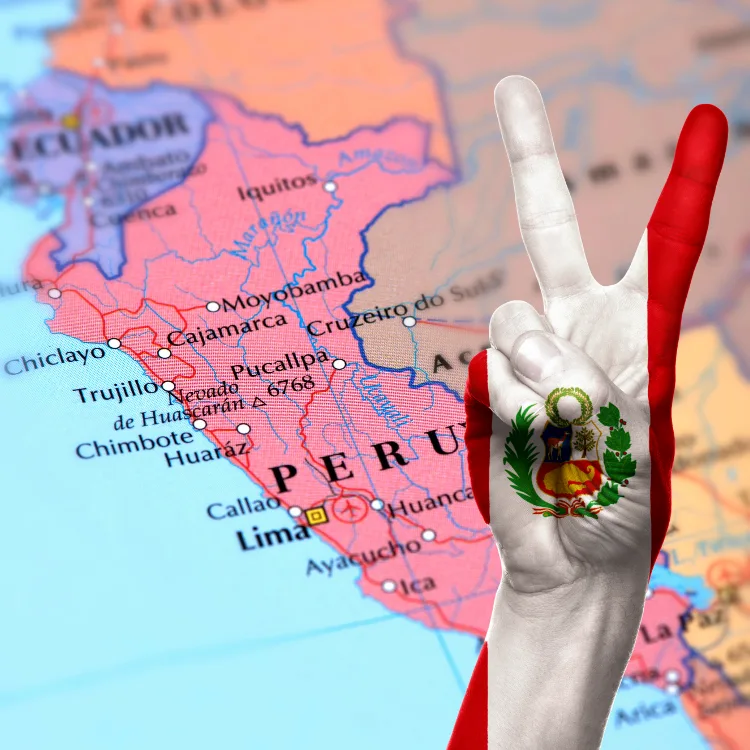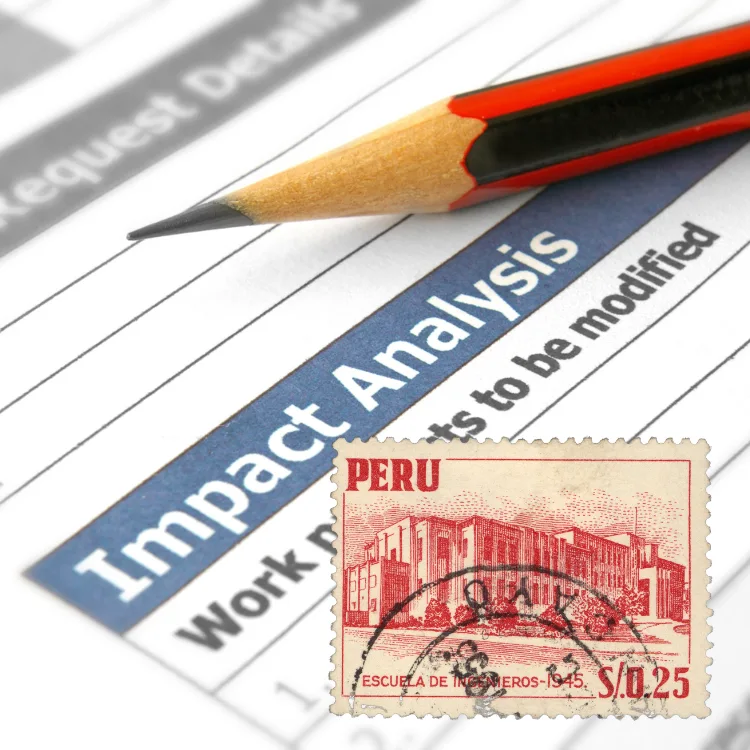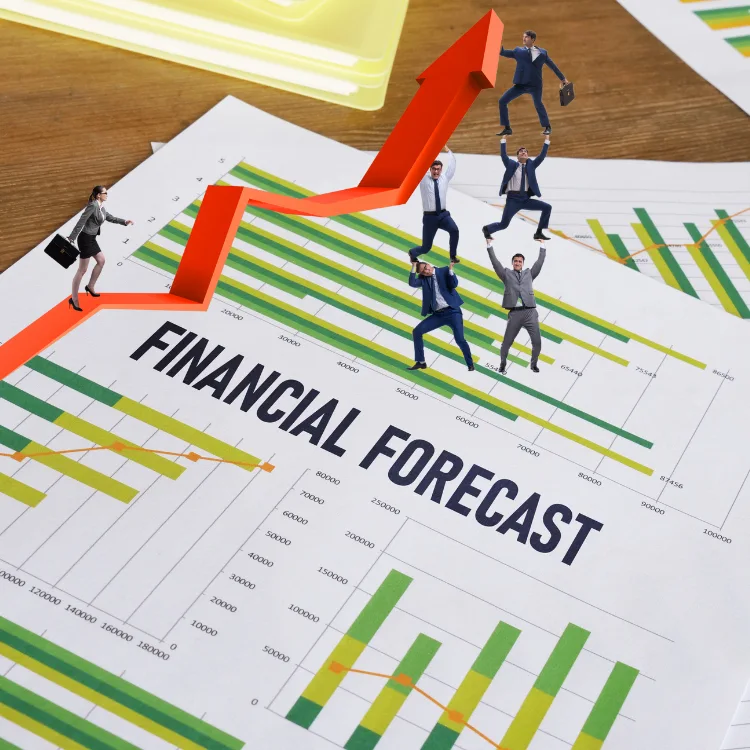Political Situation in Peru 2025: Impact on Business Processes, Analysis, and Forecasts for 2026-2030

In 2025, Peru stands at a crossroads, grappling with persistent political instability that has ripple effects across its economy and business environment. As a nation rich in natural resources and cultural heritage, Peru's political dynamics play a pivotal role in shaping business processes, from investment decisions to operational efficiency.
This comprehensive article delves into the current political situation in Peru, analyzes its influence on various business sectors, provides an overview of key developments in 2025, and offers extended forecasts for the years 2026 through 2030. Drawing from authoritative sources like the World Bank, IMF, and Human Rights Watch, we aim to equip investors, entrepreneurs, and policymakers with actionable insights.
Peru's political landscape has been marked by volatility since 2016, with multiple presidents, corruption scandals, and social unrest. In 2025, under President Dina Boluarte, the country faces a severe security crisis, rising crime rates, and calls for general elections ahead of the scheduled 2026 polls.
This instability not only erodes public confidence but also deters foreign investment, disrupts supply chains, and increases operational costs for businesses. Understanding these interconnections is crucial for navigating Peru's market in the coming years.
Business in Peruvian Amazon
Legal and practical guide for doing business in the Peruvian Amazon region.
Read guidePeru Expats Guide 2025
Complete guide covering pros and cons for expats living in Peru in 2025.
Explore guideOverview of Peru's Political Landscape in 2025
Key Political Events and Developments in Peru 2025
The year 2025 has been tumultuous for Peru, characterized by ongoing political fragmentation and public discontent. President Dina Boluarte, who assumed office amid controversy in late 2022, continues to face historically low approval ratings—hovering around 4% as reported by Americas Quarterly. This dissatisfaction stems from a surge in organized crime, corruption allegations, and inadequate public services. In March 2025, Boluarte called for general elections to address the security crisis and years-long instability, as highlighted by CNN reports.
Human Rights Watch's World Report 2025 underscores corruption as a primary driver of institutional deterioration, leading to deficient public services and environmental destruction. Freedom House notes that while Peru maintains democratic institutions and has seen peaceful power transfers, high-profile corruption scandals have eroded trust. For instance, the OAS General Assembly preparations in June 2025 saw Peru's Parliament passing laws seeking impunity for crimes against humanity, signaling an increasingly authoritarian tilt.
Protests and strikes have been rampant, particularly around Independence Day in July 2025, with multiple organizations announcing demonstrations, as per U.S. Embassy alerts. These events, coupled with a state of emergency in Lima due to record-high murders, illustrate the fragile social fabric. The IMF's Article IV Mission in March 2025 pointed to risks from political uncertainty and social unrest, which could exacerbate weather-related disruptions like El Niño.
- Rising Crime: Homicides have sharply increased, intensifying public frustration and prompting emergency measures.
- Corruption Scandals: Ongoing investigations into former presidents and officials continue to undermine governance.
- Election Preparations: With 2026 elections looming, political maneuvering has heightened, including institutional reforms amid public discontent.
These developments create a challenging environment for businesses, where regulatory unpredictability and security concerns directly impact day-to-day operations.
Analysis of Political Stability in Peru 2025
Political stability in Peru remains elusive, with six presidents since 2016 contributing to weakened institutions. The FTI Consulting report from April 2025 highlights growing public discontent over crime and institutional erosion, preparing the ground for volatile 2026 elections. This instability is compounded by external factors, such as global economic pressures and domestic issues like mining conflicts and environmental protests.
From an analytical perspective, Peru's political fragmentation—evident in a Congress with low approval and frequent impeachments—fosters policy inconsistency. For example, reforms in fiscal policy or environmental regulations often stall due to partisan gridlock. LSI terms like "Peru governance challenges" and "political volatility in Latin America" capture this broader regional context, where similar issues plague neighbors like Ecuador and Bolivia.
Comparatively, Peru's situation mirrors Chile's post-2019 unrest but lacks the institutional resilience seen in Uruguay. A key metric is the World Bank's governance indicators, which show Peru scoring low on political stability and absence of violence/terrorism, influencing its overall business climate ranking.
| Indicator | 2024 Value | 2025 Projection | Comparison to Regional Average |
|---|---|---|---|
| Political Stability Index | -0.45 | -0.50 | Below Latin America average (-0.30) |
| Corruption Perception Index | 33/100 | 32/100 | Similar to Bolivia (31/100) |
| Government Effectiveness | -0.20 | -0.25 | Lower than Chile (0.80) |
This table illustrates the declining trends, underscoring the need for structural reforms to bolster stability.
Influence of Peru's Politics on Business Processes in 2025
Direct Impacts on Investment and Economic Growth
Political uncertainty in Peru significantly hampers business confidence and investment. The IMF's June 2025 report notes that lingering uncertainty weighs on economic prospects, denting structural reform appetites. Growth is projected at 2.8% for 2025, down from earlier estimates, with policy ambiguity affecting sectors like mining and agriculture—Peru's economic pillars.
Businesses face heightened risks from social unrest, as seen in the 2023 recession triggered by protests. In 2025, the security crisis has led to increased costs for private security and insurance, particularly in urban areas like Lima. Foreign direct investment (FDI) inflows have slowed, with Coface reporting a rebound in investment supported by credit conditions but tempered by political risks.
Synonyms like "Peru business risks" and "economic instability effects" highlight how corruption and crime deter investors. For instance, the mining sector, contributing 10% to GDP, suffers from regulatory delays and community conflicts exacerbated by political mismanagement.
Sector-Specific Analysis: How Politics Affects Key Industries
Mining and Resources: Political instability has led to stalled projects, with environmental protests often turning violent. The Allianz Trade report predicts growth moderation in 2025 due to weaker public investment amid political noise.
Manufacturing and MSMEs: The Green Economy Coalition notes high instability since 2016 has hindered greening efforts for micro, small, and medium enterprises (MSMEs), which employ 75% of the workforce. Scandals and impeachments create an unpredictable regulatory environment.
Tourism and Services: Protests and crime surges, as per Al Jazeera, reduce tourist inflows, impacting a sector recovering from COVID-19. Businesses must navigate frequent disruptions, increasing operational resilience costs.
- Supply Chain Disruptions: Strikes block roads, delaying exports.
- Regulatory Changes: Frequent government shifts lead to inconsistent policies.
- Talent Retention: Instability prompts skilled labor emigration.
BBVA Research forecasts 3.1% growth in 2025 despite trade tensions, supported by high terms of trade, but warns of protectionism's shackles.

Comparative Analysis: Peru vs. Regional Peers
Compared to Colombia, where political reforms have stabilized investment, Peru's volatility lags. Chile's stronger institutions allow better business continuity despite unrest. In contrast, Bolivia's resource nationalism mirrors Peru's challenges but with more state intervention.
| Country | 2025 GDP Growth Forecast | Political Risk Level | Business Ease Ranking |
|---|---|---|---|
| Peru | 2.9% | High | 76th (World Bank) |
| Chile | 2.5% | Medium | 59th |
| Colombia | 3.2% | Medium-High | 67th |
This comparison reveals opportunities for Peru to emulate successful reforms.
Sustainable Eco-Business Amazon
Building sustainable eco-businesses in the Peruvian Amazon rainforest.
Learn moreCommunity-Based Ecotourism
How local communities lead sustainable tourism initiatives in Peru.
Discover moreEconomic Overview and Analysis for Peru in 2025
Macroeconomic Indicators and Trends
Peru's economy in 2025 is on a recovery path, with World Bank projections at 2.9% growth, driven by public investment and confidence. Inflation remains stable at 1.7-2%, per IMF, with a fiscal deficit of 2.5% of GDP. Poverty rates are declining, from 31.3% in 2024 to 30.5% in 2025.
However, the OECD Economic Outlook warns of slowing growth to 2.8% due to global and domestic uncertainties. The debt-to-GDP ratio stabilizes at 34%, reflecting prudent fiscal management amid volatility.
LSI phrases like "Peru GDP trends 2025" and "economic recovery Peru" emphasize the rebound from 2023's contraction, but political factors cap potential.
Challenges from Political Instability
Social unrest over security, as per IMF, poses short-term risks. The EIU notes Boluarte's unpopularity weighs on the economy into the medium term. Businesses must contend with higher costs and delayed reforms, such as those in labor or trade policies.
Facts: Investment gained from improved credit, but uncertainty dents appetite. Exports remain buoyant, offsetting weaker investment.
Extended Forecasts for Peru's Politics and Economy 2026-2030
Political Forecasts: Stability and Reforms Ahead
Looking to 2026-2030, Peru's political scene is poised for change with 2026 elections potentially ushering in reforms. However, risks of continued fragmentation persist, with forecasts from Americas Quarterly suggesting ongoing crime and instability challenges.
By 2030, institutional strengthening could occur if anti-corruption measures succeed, but without them, volatility may endure. Human Rights Watch anticipates persistent issues unless impunity laws are reversed.
Economic Projections: Growth Trajectories and Risks
World Bank forecasts 2.5% growth in 2026, with poverty at 29.9%. BBVA Research projects tax revenues averaging 19.2% of GDP annually from 2026-2030, supporting fiscal consolidation.
Statista indicates real GDP growth declining by 0.83 percentage points from 2024 to 2030, fluctuating around 2.5-3%. IMF data shows steady but modest expansion, with GDP per capita rising gradually.
Long-term: Peru could achieve high-income status in two decades with reforms boosting productivity and reducing disparities. Otherwise, it may take 64 years.
- 2026: Growth 2.5-2.7%, fiscal deficit 1.8%.
- 2027-2028: Stabilization around 2.8%, focus on green transitions.
- 2029-2030: Potential 3%+ if reforms implemented, but political risks loom.
Risks include intensification of uncertainty, unrest, and external shocks. Opportunities lie in digital corridors with Chile and mining exports.

Business Implications and Strategic Recommendations
For businesses, forecasts suggest diversifying risks, investing in resilient supply chains, and engaging in advocacy for reforms. Sectors like renewables and tech could thrive with stability, per Atlantic Council.
Recommendations: Monitor election outcomes, hedge against currency fluctuations, and leverage regional partnerships.
External Links:
World Bank Peru Overview
Frequently Asked Questions (FAQ)
What is the current political stability in Peru 2025?
Peru faces high instability with low presidential approval, rising crime, and protests, impacting governance and public trust.
How does Peru's politics affect foreign investment in 2025?
Uncertainty deters FDI, increases costs, and delays projects, particularly in mining and infrastructure.
What are the economic growth forecasts for Peru in 2026?
Growth is projected at 2.5-2.7%, with improving fiscal deficits but persistent political risks.
Will Peru's economy improve by 2030?
Modest growth around 2.5-3% annually is expected, but reforms are needed for faster progress toward high-income status.
What sectors are most affected by political instability in Peru?
Mining, tourism, and MSMEs suffer from unrest, regulatory changes, and crime.
How can businesses mitigate risks in Peru 2025-2030?
Diversify operations, invest in security, and monitor political developments closely.
What role does corruption play in Peru's business environment?
It erodes institutions, increases operational hurdles, and reduces investor confidence.
Navigating Peru's Political and Economic Future
In summary, Peru's 2025 political situation, marked by instability and reform needs, profoundly influences business processes, constraining growth and investment. Analysis reveals opportunities amid challenges, with forecasts for 2026-2030 indicating steady but modest progress if stability improves. Businesses must adopt adaptive strategies, leveraging data from sources like the World Bank and IMF, to thrive in this dynamic landscape. As Peru approaches pivotal elections, proactive engagement could unlock its vast potential, fostering a more prosperous future.
Ayahuasca Project
Traditional healing practices and spiritual experiences in the Amazon rainforest.
Explore projectJungle Retreat Land
Premium land parcels in the Peruvian jungle for retreat centers and eco-projects.
View propertiesEmigration Services
Professional support for relocating to Peru and starting your new life in South America.
Learn moreHomes in the Jungle
Sustainable home construction projects in the heart of the Peruvian jungle.
View homes